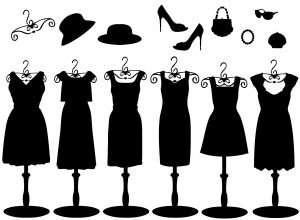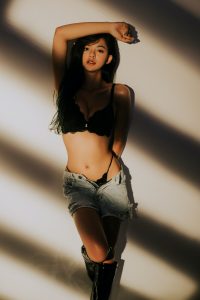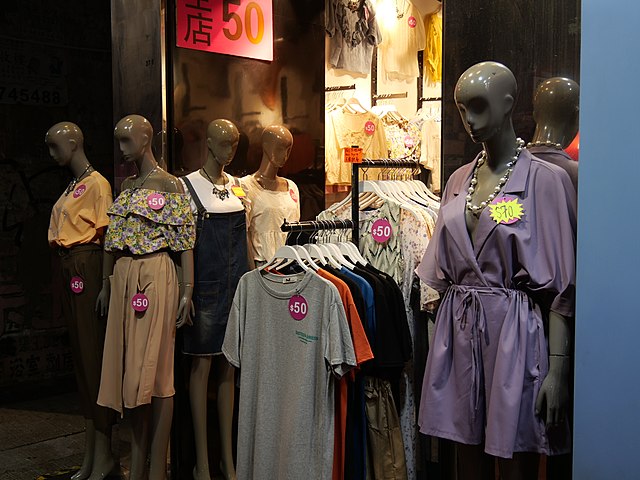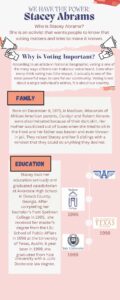People often forget that style is more than just clothes. Clothes are a form of self-expression, creativity, and most importantly communication. Especially now in the age of social media, personal style has been more evident than ever before. There are many different aesthetics and subcultures of fashion, each with its own origins and messages: there is “no more clear boundary between high and low, mainstream and alternative culture” 1 This also corresponds with the rise of fast fashion and the popularity of secondhand clothing, thrifting specifically. Now more than ever women have access to clothing that expresses their own ideas of fashion and individuality.

However, modern-day society remains patriarchal even with all the strides that have been made for gender equality. Women in media: film, television, music, theatre, dance, etc. were and are still being viewed under what is referred to as the male gaze. 2 The male gaze is to represent women as “objects of desire, as legacy bearers, and as real estate rather than imagined sex partners” 3 This directly benefits and is a result of the patriarchy. The idea of the male gaze has also been embedded in women’s fashion hiding under femininity. While many feminists have been advocating for women to take their femininity with pride, there are ways that the male gaze turns femininity into a realm to benefit the patriarchy’s inherent need to sexualize women at all times. Men are in control in regard to the male gaze. Alicia Malone describes the male gaze as “men are almost always doing the looking, with women left in the weaker position of being looked at” saying that it “affects how each of us view women – and how women view themselves.” 4 This includes very sexualized hyperfeminine, and often uncomfortable and impractical, clothing for women. So, while women can believe they are embracing their feminine side, it could present itself as in agreement with the male gaze.

In opposition to the male gaze, a new feminist form of thought arose. The female gaze presents women as proponents of popular culture making them “both performers and fans” 5 The female gaze is women expressing themselves only for themselves. This breaks open the box that the male gaze had trapped women in. In regard to modern women’s fashion, this can express itself in unconventional femininity. This can manifest itself in many ways since it is personal in nature. The female gaze can prioritize different aspects of clothing such as comfort, function, versatility, and sustainability. the female gaze also opens up more room for women to develop their personal style, and in the age of fast fashion and micro trends, personal style is far more difficult to achieve. Fashion under the female gaze also tends to lean into a more practical clothing shift-clothes that can be worn on many different occasions and that can be layered easily with other pieces.

The most upfront example in recent years is the depiction of the character Harley Quinn in the DC Cinematic Universe. The modern Harley Quinn audiences know, played by Margot Robbie, was first introduced in the 2016 film Suicide Squad. 6In the film Quinn is dressed in a ripped t-shirt with the phrase “Daddy’s Little Monster” printed along the front of it, shorts cut in the shape of underwear, fishnet stockings, heeled tennis shoes, and topped with a blue and red bomber style jacket. Throughout the film, Quinn is expected to fight in various modes of combat, however, her outfit does not reflect the clothes of a person who is running and fighting others. While the outfit itself is very feminine, it is apparent that this version of femininity is directed towards the predominantly male audience that the film was geared towards. Especially in comparison to the male characters of the film, who gets to wear more conservative and practical attire, Quinn sticks out like a sore thumb. In opposition, Quinn’s outfit in her subsequent film Birds of Prey (and the Fantabulous Emancipation of One Harley Quinn)7, Quinn is dressed more towards the female gaze. Harley gets a series of outfit changes, all that feel more realistic to a combative fighter and woman. While the outfits are still flashy and outlandish (after all she is still a comic book character) they are geared more towards a female audience. She is still dressed in a feminine and sexual way, but the clothes express her personality far better than in the previous film. As Harley gains independence from her once abusive boyfriend in the previous film, she is able to dress for herself and her own self-expression.
Seeing Harley Quinn’s fashion evolution in media is a prime example of the shift that women’s fashion regarding the male and female gaze. While dressing towards the male gaze is not inherently awful, having the male gaze be the primary lens women are perceived in fashion only enforces the patriarchal influence on women. The female gaze is to “give women agency” on how they can be perceived by both men and women. 8 The female gaze is about expressing femininity without the sole purpose of benefitting men. It is about showing personality, uniqueness, femininity, interests, and style. Clothing is more than clothes. Clothing is a message and a reflection of the person.
- Elayne Rapping, “The Female Gaze: Women as Viewers of Popular Culture,” The Nation, August 27, 1990, par 3. ↵
- Jacki Wilson and Morna Laing, “Re-Reading the Queer Female Gaze in the 1990s: Spectatorship, Fashion and the Duality of Identification and Desire Catherine Baker,” in Revisiting the Gaze: The Fashioned Body and the Politics of Looking (New York City, New York: Bloomsbury Visual Arts, 2020), pp. 201-202, 201. ↵
- James D. Bloom, “Chapter 3: American Fiction: Gaze Canon,” in Reading the Male Gaze in Literature and Culture: Studies in Erotic Epistemology (Basingstoke: Palgrave Macmillan, 2017), pp. 64-65, 65. ↵
- Alicia Malone, “Introduction,” in The Female Gaze: Essential Movies Made by Women (Coral Gables, Florida: Mango Publishing Group, 2018), p. 1, 1. ↵
- Elayne Rapping, “The Female Gaze: Women as Viewers of Popular Culture,” The Nation, August 27, 1990, par 6. ↵
- Suicide Squad (Warner Bros. Pictures, 2016). ↵
- Birds of Prey (and the Fantabulous Emancipation of One Harley Quinn) (Warner Bros. Pictures, 2020. ↵
- Dina Lobo, “Fresh Eyes: How One Fashion Photographer Subverts the Male Gaze,” This Magazine, 2016, par 6. ↵



28 comments
Sara Davila
I loved how the author highlighted the differences between the different gazes using images. It highlights the differences in the fashion senses between the two sexes. The author also did an amazing job explaining the different gazes and how it effects how a woman is viewed by herself and others. I believe this article was beautifully written and shows the modern issues woman face today. Clothing has revolutionized over the decades, but its changes brings controversy.
Izabella Torres
I really enjoyed reading this article! It was very well written and it was attention grabbing. I thought it was very informational in regards to what the female and male gaze is and how it affects women in society. To be completely honest, I never really knew what the male or female gaze was so I just never really paid attention to it, but after reading your article I feel very well informed on how much the male gaze can affect us and also how the female gaze can empower us. I also really liked how you used Harley Quinn and her different outfits to describe what the female and male gaze is. Overall, this was a very interesting article. Nice work!
Andrea Ramirez
Very interesting and engaging article Andrea,
I agree with you that clothing is a form of expression and communication. It’s something deep.
I was very interested in the information you put in about how male gaze affects how each of us view women, including us.
I did not an about the female gaze, “woman expressing themselves only for themselves” that makes me quite happy. Thus, women have the courage to be able to dress and express themselves the way they want. I also find it fascinating that this not only includes appearance but also comfort, function, and sustainability.
Finally, I thought it was very good that you included examples and images in your article because this set made it more entertaining and easier to read for me.
Excellent work!
Irene Urbina
I enjoyed reading this article, the topic is very relevant and interesting. I love fashion and how people use it to express themselves and make a statement. I am glad that media is appealing more to the female gaze now-a-days because what we see in the media influences our lives, so I feel like it is good that women are getting dress in more practical attire but always feeling feminine. Also, Harley Quinn, as you said, is a great example and I really liked how you explained her development throught the DC Universe and how her clothing also showed that development.
Guadalupe Altamira
Very interesting article and great example used. Fashion is a great way to express personality and creativity along with many other subjects. The media during these times has taken a very big step as it improves and seeing that the “male gaze” influences in many ways, especially in media. This article gave a good example using Harley Quinn as you explained her character development and fashion attraction in the article. Great article overall!
Eliza Merrion
This article is very well written and a topic very relevant to current society. I found the idea of male gaze, “represent women as “objects of desire, as legacy bearers, and as real estate rather than imagined sex partners,” a particularly interesting topic. This is often something that is suppressed because it is almost what is expected. However, like you said it plays a very critical role in patriarchy. I also liked the images you chose to offer a visuals in your article, I think it supports it well.
Madeline Chandler
This is such a well written engaging article. Very captivating and informative. You did fantastic job at walking your audience through the idea of “male gaze” through fashion, cinema, and through relationships portrayed in movies. In all honesty I do not think that many people think of these underlying themes when they see clothes or watch movies. Yet this article does actually what you want, and brings light to women and issues in creative outlets. Job well done! Enjoyed it!!
Velma Castellanos
The article was well written and had a great pace. I personally have always loved fashion so your article immediately got me hooked as soon as I read fashion. You did a great job of explaining Harley Quinn in your article. I also enjoyed your tone. I noticed your credits were good too. The ‘gaze’ is something I never paid attention to before and your article helped me realize how much that gaze can affect us.
Margaret Maguire
This article did a wonderful job of explaining what exactly the female gaze and the male gaze is. I had always heard the two terms around in conversation or in media but I never really knew what it meant until reading this article. I really liked the example of Harley Quinn’s outfits as examples to define what female and male gaze means. The male gaze of women’s clothing leans into the idea that women are, “objects of desire.” While the female gaze of women’s clothing leans into the idea that clothes are clothes and I will wear what works for me.
Madison Goza
I loved how you opened the article with describing style and clothing in general as a form of self-expression and communication. It caught my attention and really set the tone for the overall article. I also appreciated that you defined the male gaze because I only had a rough understanding of it, and a formal definition clarified that uncertainty. It was interesting that you noted women’s difficulty in achieving personal style because that is also something that I struggle with. Do I genuinely like something, or do I like it because it’s trendy? Finally, your Harley Quinn example perfectly depicted the crux of your argument and how the perception of clothing can progress from the male perspective to the female perspective.